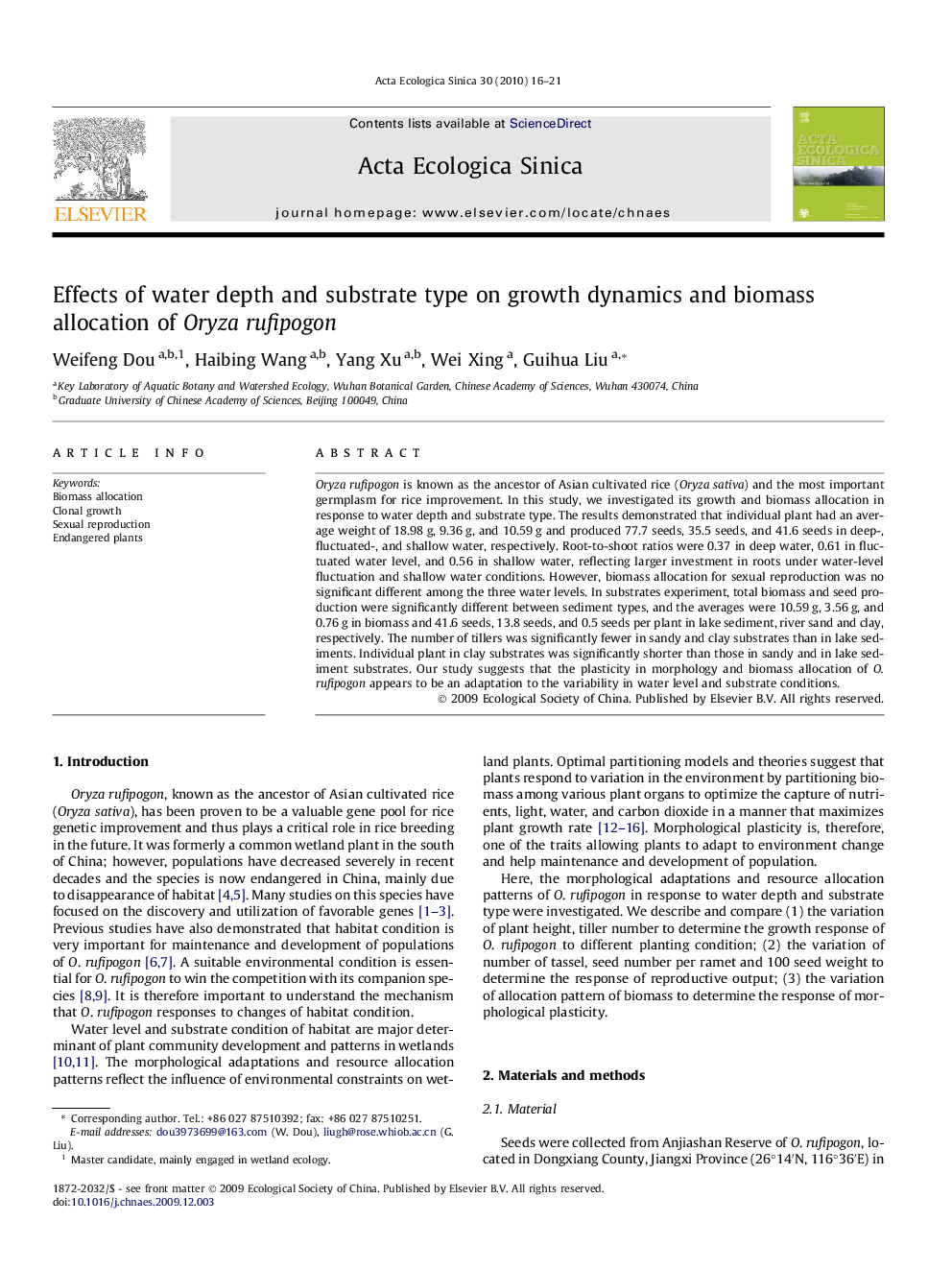| Article ID | Journal | Published Year | Pages | File Type |
|---|---|---|---|---|
| 4380301 | Acta Ecologica Sinica | 2010 | 6 Pages |
Abstract
Oryza rufipogon is known as the ancestor of Asian cultivated rice (Oryza sativa) and the most important germplasm for rice improvement. In this study, we investigated its growth and biomass allocation in response to water depth and substrate type. The results demonstrated that individual plant had an average weight of 18.98Â g, 9.36Â g, and 10.59Â g and produced 77.7 seeds, 35.5 seeds, and 41.6 seeds in deep-, fluctuated-, and shallow water, respectively. Root-to-shoot ratios were 0.37 in deep water, 0.61 in fluctuated water level, and 0.56 in shallow water, reflecting larger investment in roots under water-level fluctuation and shallow water conditions. However, biomass allocation for sexual reproduction was no significant different among the three water levels. In substrates experiment, total biomass and seed production were significantly different between sediment types, and the averages were 10.59Â g, 3.56Â g, and 0.76Â g in biomass and 41.6 seeds, 13.8 seeds, and 0.5 seeds per plant in lake sediment, river sand and clay, respectively. The number of tillers was significantly fewer in sandy and clay substrates than in lake sediments. Individual plant in clay substrates was significantly shorter than those in sandy and in lake sediment substrates. Our study suggests that the plasticity in morphology and biomass allocation of O. rufipogon appears to be an adaptation to the variability in water level and substrate conditions.
Related Topics
Life Sciences
Agricultural and Biological Sciences
Ecology, Evolution, Behavior and Systematics
Authors
Weifeng Dou, Haibing Wang, Yang Xu, Wei Xing, Guihua Liu,
